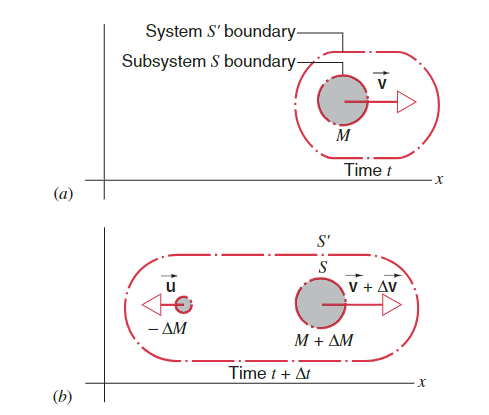Depending on how we define our system, our problem can turn from constant mass to variable mass. For example, a cannon with a cart shooting cannonballs. If our system includes the cannon, cart, and cannonballs, the mass is constant. However, if we only include the cannon and cart, the mass will decrease with each cannonball shot.
We can call our full system of the cannon, cart, and cannonballs

Lets also introduce an external force such as drag to give a more general equation. For a change in time
We can calculate for external force from here:
rewritten as:
Where
Notice that when the change in mass is zero, aka when